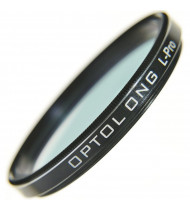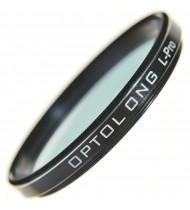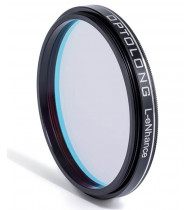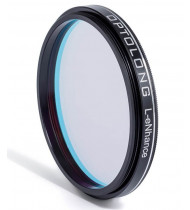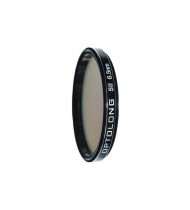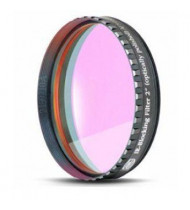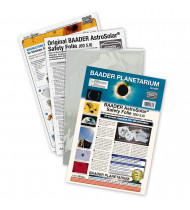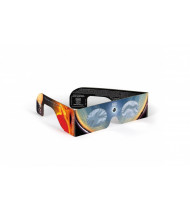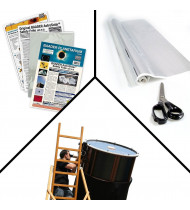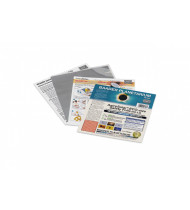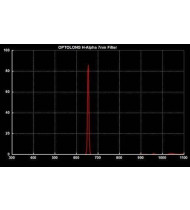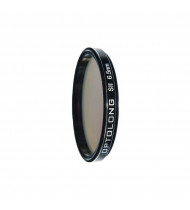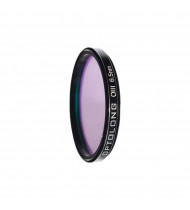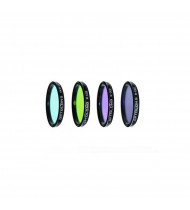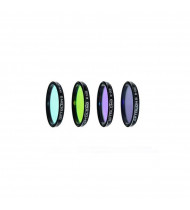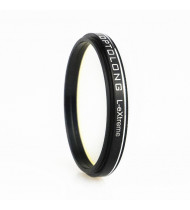Search results for 'celestron outland x 10x50 cb71348 4047825032720'
Optolong L-Pro Filter 2"
US$ 167.75The L-Pro CCD filter improves the contrast of deep-sky objects and reduces the sky background.
- blocks UV and IR (700 - 1100 nm)
- high transmission at passband
- improved color balance for DSLRs and One-Shot Color Astro Cameras, e.g. ASI Color Cameras cooled or uncooled by ZWO.
- high optical quality
- in 2" filter cell
- The L-Pro Nebula filter permits roughly 3x longer exposure times than without a filter and therefore improves contrast significantly.
Optolong L-Pro Filter 1.25"
US$ 145.68The L-Pro Astrophotography CCD filter is a filter for improving the contrast of deep-sky objects and dampening the sky background.
- blocks UV and IR (700 - 1100 nm)
- high transmission at passband
- improved color balance for DSLRs and One-Shot Color Astro Cameras, e.g. ASI Color Cameras cooled or uncooled by ZWO.
- high optical quality
- in 1.25" filter cell
- The L-Pro Nebula filter permits roughly 3x longer exposure times than without a filter and therefore improves contrast significantly.
L-eNhance 1.25 "Optolong filter (M28x0.75) 31.8mm - Recommended for: shooting in double pass band (H-Alpha, OIII and H-Beta) with CMOS or CCD color cameras or DSLR
Optolong L-eNhance Light Pollution Filter 2"
US$ 175.70L-eNhance 2" Optolong filter (M28x0.75) 50.8mm - Recommended for: shooting in double pass band (H-Alpha, OIII and H-Beta) with CMOS or CCD color cameras or DSLR
Optolong OIII Filter 6,5nm 2" (50.8mm)
US$ 198.66Extra Narrowband OIII-CCD 6.5nm filter is designed for nebula observation allowing 6.5nm bandwidth of light centered on a wavelength of 500nm through, which corresponds to OIII emission lines, and reducing the transmission of certain wavelengths of light, specifically those produced by artificial light including mercury vapor, and both high and low pressure sodium vapor lights and the unwanted natural light caused by neutral oxygen emission in our atmosphere (i.e. skyglow).
Optolong SII Filter 6.5nm 2" (50.8mm)
US$ 198.66Extra narrowband SII-CCD 6.5nm filter (Sulful II for CCD) is designed for nebula observation allowing 6.5nm bandwidth of light centered on a wavelength of 672nm through, and reducing the transmission of certain wavelengths of light, specifically those produced by artificial light including mercury vapor, and both high and low pressure sodium vapor lights and the unwanted natural light caused by neutral oxygen emission in our atmosphere (i.e. skyglow).
Baader UV/IR Cut / L-Filter 2"
US$ 86.52- Blocks UV below 400nm and IR above 680nm
- Maximum transmission, scratchproof hard coated
- non-ageing sealed coating edges
- AstroSolar® Safety Film 5.0 for solar observation and photography at high magnification, telescope quality, Optical Density (OD) = 5.0
- Safe for visual solar observation (with additional optics) and imaging
- This highest precision film consistently produces strehl ratios of 94 to 96 percent at interferometric tests – thus it performs optically like a Fluorite Triplet Lens by Carl Zeiss or Astro Physics
- AstroSolar Safety Film is best suited for precision work with all astronomical telescopes and binoculars – just as well as for all photographic camera- and tele-lenses
- For more than 25 years on the market, the only film-material made to not deteriorate the optical wavefront, it does allow to attain high magnification with any long-range optics without reducing sharpness or contrast of the solar surface.
OUT OF STOCK
- Safe solar observation! 100% UV-protection, 100% IR-protection, sun light intensity reduced by 99,999%
- Our Solar Viewer AstroSolar® Silver/Gold – MADE IN GERMANY – safely protect your eyes for visual solar observation. This is THE solution to see the partial phase of Solar Eclipses or even big sunspots with your own eyes!
- Consists of Baader AstroSolar® Silver/Gold Film, with eye-sided reflex-free viewing. Also blocks IR, thus no unpleasant feeling of warmth in the eyeball. Optical Density OD=5,0
- CE / ISO certified: conforms to and meets the transmission requirements for eye safety: EN ISO 12312-2:2015 – Instructions in four languages (English, German, French, Spanish) on the inner side of the solar viewer
OUT OF STOCK
- AstroSolar® Safety Film 5.0 for solar observation and photography at high magnification, telescope quality, Optical Density (OD) = 5.0
- Safe for visual solar observation (with additional optics) and imaging
- This highest precision film consistently produces strehl ratios of 94 to 96 percent at interferometric tests – thus it performs optically like a Fluorite Triplet Lens by Carl Zeiss or Astro Physics
- AstroSolar Safety Film is best suited for precision work with all astronomical telescopes and binoculars – just as well as for all photographic camera- and tele-lenses
- For more than 25 years on the market, the only film-material made to not deteriorate the optical wavefront, it does allow to attain high magnification with any long-range optics without reducing sharpness or contrast of the solar surface.
OUT OF STOCK
- AstroSolar® ECO-size Safety Film 5.0 for solar observation and photography at high magnification
- Size: ca. 140 x 155 mm, incl. DIY-instructions and DIY cutting-template – telescope quality – Optical Density (OD) = 5.0
- Safe for visual solar observation (with additional optics) and imaging
- This highest precision film consistently produces strehl ratios of 94 to 96 percent at interferometric tests – thus it performs optically like a Fluorite Triplet Lens by Carl Zeiss or Astro Physics
- For more than 25 years on the market, the only film-material made to not deteriorate the optical wavefront, it does allow to attain high magnification with any long-range optics without reducing sharpness or contrast of the solar surface.
- The film is from the same material as our proven AstroSolar® Safety Filme 5.0 in A4-size, due to high demand now availble in a smaller size at an economical price, suitable as solar filter for small telescopes, finders, binoculars, spotting scopes and camera lenses
OUT OF STOCK
Optolong H-Alpha 7nm 1.25" (31.8mm) v.2
US$ 136.85Bester H-alpha-Linienfilter für die Astrofotografie von Emissionsnebeln mit höchstem Kontrast und der Wiedergabe zartester Nebeldetails.
♦ schmalbandiger (<=7 nm) Linienfilter für wichtige Nebellinie
♦ bevorzugt für CDD-Kameras mit Full-Frame-Transfer-Technik
♦ 2 mm dick und somit homofokal mit vielen anderen Filtern von Optolong
♦ Interferenzfilter
♦ feinoptisch poliert
♦ mehrschichtig hartvergütet - reflexfrei und weitgehend kratzfestOptolong SII Filter 6.5nm 1.25" (31.8mm)
US$ 149.21Extra narrowband SII-CCD 6.5nm filter (Sulful II for CCD) is designed for nebula observation allowing 6.5nm bandwidth of light centered on a wavelength of 672nm through, and reducing the transmission of certain wavelengths of light, specifically those produced by artificial light including mercury vapor, and both high and low pressure sodium vapor lights and the unwanted natural light caused by neutral oxygen emission in our atmosphere (i.e. skyglow).
Optolong OIII Filter 6,5nm 1.25" (31.8mm)
US$ 131.56Extra Narrowband OIII-CCD 6.5nm filter is designed for nebula observation allowing 6.5nm bandwidth of light centered on a wavelength of 500nm through, which corresponds to OIII emission lines, and reducing the transmission of certain wavelengths of light, specifically those produced by artificial light including mercury vapor, and both high and low pressure sodium vapor lights and the unwanted natural light caused by neutral oxygen emission in our atmosphere (i.e. skyglow).
Optolong Kit L-RGB 1,25" (31.8mm)
US$ 189.83The LRGB filter kit is designed for maximum contrast and with extremely high gradients for a clear differentiation of light colors
Optolong Kit L-RGB 2" (50.8mm)
US$ 290.48The LRGB filter kit is designed for maximum contrast and with extremely high gradients for a clear differentiation of light colors
Optolong L-eNhance Canon EOS Clip Filter
US$ 184.53EOS Clip version of the famous L-eNhance filter by Optolong
Optolong L-eNhance is a dual-band pass filter which has been designed for DSLR (digital SLR), color CMOS and monochrome CCD cameras. The convenience and cost effectiveness of this filter allows amateurs to image a rich selection of astronomical images, even in bright, heavily light-polluted areas. It effectively isolates the H-Alpha, H-Beta, and Oxygen III nebula emission lines and achieves a maximum transmission of up to 90%. The performance of this filter delivers superb images.Optolong L-eXtreme Filter 2" (50.8mm)
US$ 264.00The advantage of the L-eXtreme filter is that there is no transmission between the H-beta and OIII lines, as there is no nebula emission lines there. In this case, it isn't letting light pollution come through so that maximize nebulas signal and make the sky background darker while imaging. The L-eXtreme filter should better isolate the emission lines only and better protect from light pollution.


